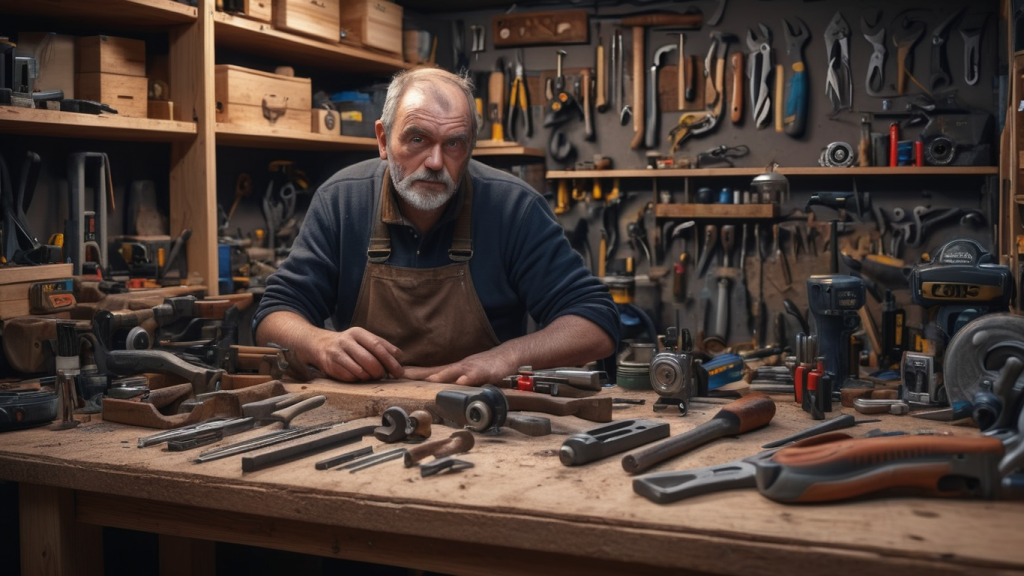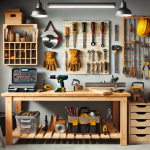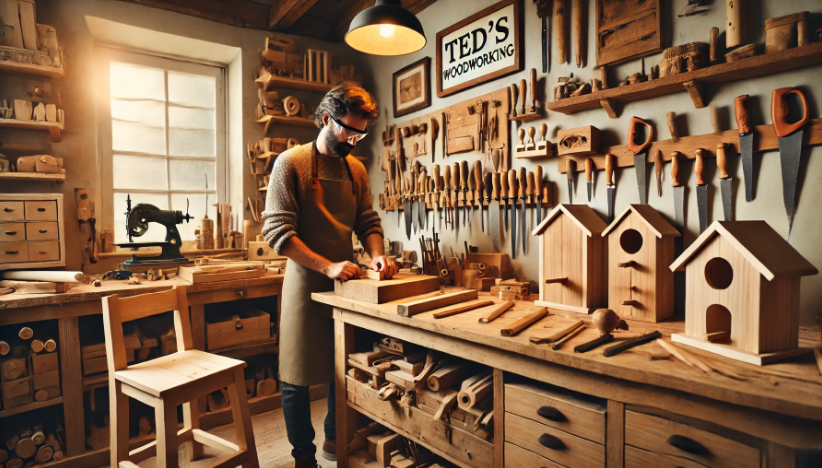Introduction
Meet Ralph Chapman
Hi, my name is Ralph Chapman, and today you’re going to learn what it takes to set up a fully equipped workshop in a small space for under $1,000. You don’t need a lot of space, and you don’t need to spend a fortune on tools to set up your shop. What I’m about to share could save you years of tedious trial and error and tons of wasted money.
Why Set Up a Workshop for Under $1,000?
Over the next few minutes, you’ll discover the three most common mistakes people make when setting up a shop and how you can avoid them right from the start. Setting up a workshop doesn’t have to require taking on a second mortgage, and it’s probably not as difficult as you might think. However, there’s a lot of misinformation about tools and shop setups, and today I’m going to break down these common misconceptions for you.

Three Common Mistakes and How to Avoid Them
Mistake #1: Buying Tools You Don’t Need
Many people make the mistake of buying tools they don’t need, often using them only once. If you don’t need the tools immediately or aren’t sure if you’ll need them in the future, you might end up wasting your money. The best approach is to buy tools as you need them. Ask yourself, “Does this tool meet my need today? How long will it take to outgrow it?” Start with a few simple and inexpensive hand tools like chisels, a mallet, and a saw. For power tools, a good circular saw and guide are great for dimensioning and jointing.
Mistake #2: Overspending on Tools
It’s easy to fall into the trap of believing you need to buy the most expensive tools. I once believed in buying the most expensive tools I could afford, but I soon realized this wasn’t necessary. The tool industry thrives on convincing consumers to buy the latest tools, often through paid sponsorships and marketing. Expensive tools don’t automatically result in better projects. You can set up a complete shop for $1,000 or less, especially if you consider buying used tools.
Mistake #3: Assuming You Need a Large Space
There’s a common myth that you need a large space for woodworking. When I first started, I set up my shop in a small corner of my apartment. Despite the limited space and budget, I was able to build impressive projects. The key is to make sure your equipment is movable and to consider a portable, all-in-one workbench. Don’t be discouraged by a lack of space; you can still create beautiful woodworking pieces.

Ultimate Small Shop Guide
Overview of the Guide
The Ultimate Small Shop guide is a comprehensive resource that compiles decades of experience and lessons learned in woodworking. This 246-page illustrated book includes six modules covering every aspect of setting up a home workshop.
Detailed Breakdown of the Modules
- Module 1: Tool Selection
- How to determine which tools you need before you start buying
- Hand tool shopping list for a budget under $500
- Power tool and hand tool shopping list for a budget under $1,000
- Secret sources for buying tools at huge discounts
- Module 2: Space Selection
- Pros and cons of different workshop spaces
- Layout ideas for all sizes of workshops
- Tips for setting up a shop in various home spaces
- Module 3: Shop Layouts
- Planning and designing your workshop to fit your space
- Detailed floor plans and space-saving layout recommendations
- Tips for machine placement and dividing your workshop for different tasks
- Module 4: Electricity, Lighting, and Soundproofing
- Cost-effective solutions for lighting and electricity
- Methods for reducing noise in your workshop
- Low noise tools recommendations
- Module 5: Heating, Cooling, Ventilation, and Dust
- Tricks for ensuring clean air in your workshop
- Recommendations for heaters and shop vacuums
- Tips for maintaining a comfortable working environment
- Module 6: Workshop Safety
- Tips for preventing workshop fires
- Tricks to avoid tripping over cables
- A comprehensive checklist for shop safety

Key Takeaways
- Start Small: Begin with essential hand tools and buy power tools as you need them.
- Budget Wisely: Avoid overspending on tools. Expensive doesn’t always mean better.
- Maximize Space: You don’t need a large space to set up a functional workshop. Plan your layout carefully and use movable equipment.
- Use Resources: Utilize the Ultimate Small Shop guide to avoid common mistakes and save money.
- Safety First: Always prioritize safety in your workshop setup and daily operations.

FAQs
How much space do I really need for a small workshop?
You can set up a fully functional workshop in as little as 8×8 square feet. With careful planning and the right tools, small spaces can be very effective for woodworking.
Can I set up a workshop for under $1,000?
Yes, it’s entirely possible to set up a workshop for under $1,000. By starting with essential tools and considering used options, you can stay within budget.
What tools are essential for starting out?
Start with a few simple hand tools like chisels, a mallet, and a saw. For power tools, a circular saw and guide are versatile and cost-effective choices.
How can I find discounted tools?
The Ultimate Small Shop guide includes a list of secret sources for buying tools at huge discounts, saving you up to 70% off retail prices.
Is the guide suitable for beginners?
Absolutely. The Ultimate Small Shop guide is designed to help both beginners and experienced woodworkers set up an efficient and cost-effective workshop.
Conclusion
Setting up a workshop doesn’t have to be expensive or require a large space. By following the advice and strategies in the Ultimate Small Shop guide, you can create a functional and efficient workspace on a budget. Don’t fall for common misconceptions and overspend on tools you don’t need. Instead, invest in the right resources and start your woodworking journey with confidence. Click the “Add to Cart” button below to get started and transform your small space into a woodworking haven.






